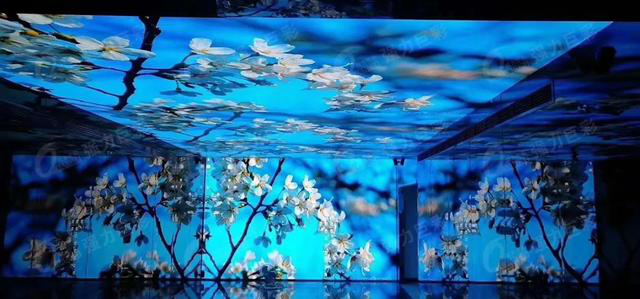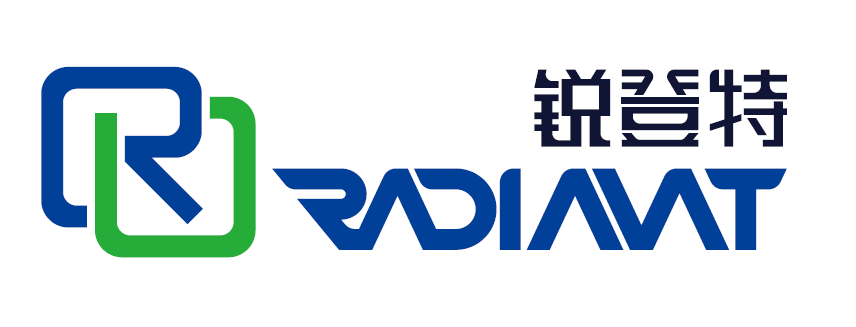Micro LED
In the past two or three years, large-size displays have been the mainstream application of Micro LED, and it has been accompanied by high market demand. But the actual progress has not achieved the desired effect. Although the path of chip cost reduction is clear, we also conservatively view the development of Micro LED in large-size applications. Specifically, it is analyzed from two aspects: the relationship between other process yields and costs, and the relationship between cost structure distribution and brands.
The cost structure of Micro LED includes other links and processes besides the chip, such as the backplane. Therefore, chip cost reduction alone is not enough to drive down the overall cost. Taking Radiant products as an example, The LED Screen Wall is a large Micro LED display spliced by multiple modules and cabinets, and uses a 12.7-inch LCD LTPS process substrate. Although the LTPS process is simple, in order to achieve seamless splicing, other processes such as side wires need to be added to the substrate. However, the yield rate of this type of process is currently relatively low, which poses a great challenge to manufacturers and will naturally result in higher costs.
Look at the distribution of the overall cost structure. According to the analysis, the cost structure of Micro LED includes five major parts: chip (28%), transfer/rework (39%), backplane/driver (19%), molding/black matrix/assembly (11%), power supply/housing/control Board (3%).
Transfer/rework, molding/black matrix/assembly account for more than half of the total cost. The cost of these two parts is borne by the brand side, which means that the brand side needs a lot of investment, reserves and accumulation. In other words, for emerging brands, the learning curve and experience in production yield to enter the field of Micro LED large-scale displays will be a relatively high threshold. At present, apart from Korean manufacturers, other manufacturers may need a certain period of time to prepare, and only after accumulating production experience can they embark on a relatively broad road.

In contrast, Micro LED small-size displays seem to have a trend of exceeding expectations. For months, we've been hearing about motion predictions for the Apple Watch. According to analysis, since the mass production of Apple Watch in 2015, subsequent versions have focused on size, brightness, display area, and power saving, all of which are in line with the characteristics of Micro LED. At the same time, Apple's published patents show that subsequent products tend to be equipped with flexible display and sensing functions. As we all know, countries are facing the problem of aging, and the consumer demand for daily monitoring of physical conditions is constantly increasing. If the watch is equipped with Micro LED and combined with sensors, it can make biological monitoring more accurate and more functional. This is the spark that Micro LED can create with smart wearable devices such as Apple Watch.
AR device display is also a suitable entry point. In order to achieve light and thin, transparent and penetrating effects, manufacturers currently use optical waveguide technology. However, current waveguides convert light less than 1 percent efficiently. Looking at the AR light engine technology, Micro LED has a natural advantage over Micro OLED in terms of brightness and reliability. Therefore, many Micro LED AR alliances have been formed around the world, such as Meta+Plessey, Google+Raxium, Oppo+JBD, etc.
It can be foreseen that the application prospect of Micro LED in the field of AR display is bright, but based on the current situation, Micro LED needs to overcome many technical obstacles before achieving the ideal effect pursued by AR, including the problem of full color and the efficiency of red light chips. , the choice of chip material and structure, the choice of mass transfer and detection technology, the choice of backplane and drive architecture, etc.

Generally speaking, the emerging application market of Micro LED is just like the beginning of the lights, ready to go.
According to the analysis, the shipment of Mini LED backlight application products will increase from about 17 million units in 2022 to about 21 million units in 2023. But what needs to be admitted is that Apple iPad and MacBook have a great influence on the direction of the whole market. Considering that Apple is likely to switch from Mini LED to OLED, it is estimated that the shipment of Mini LED backlight application products will decline in 2024. However, this will only be a short-term phenomenon of turbulence. After 2024 and 2025, as the cost drops, more brands will import Mini LED. Shipments are expected to reach 75 million units in 2027.
The growth curve of Micro LED is relatively smooth, and it is expected to keep growing year by year in the next few years.
In 2023, the growth momentum of Micro LED chip output value will still mainly come from large displays. The market size is expected to grow from around US$14 million in 2022 to around US$32 million. In 2024, wearable devices will become another engine to promote the growth of Micro LED chip output value after mass production begins.
Looking forward to 2026, with the further maturity of technology and cost, AR and vehicle display are expected to enter the fast lane of development, driving the demand for Micro LED chips to grow. On the basis of the significant cost reduction, it is boldly expected that smartphones will also provide opportunities for Micro LED applications in 2027. Considering the possibilities of all application scenarios, it is estimated that the overall chip production value will reach US$1.244 billion in 2027, with a compound annual growth rate of 146%. All in all, the road of Micro LED is broad, and the application prospect is very worth looking forward to.
Post time: Nov-23-2023
